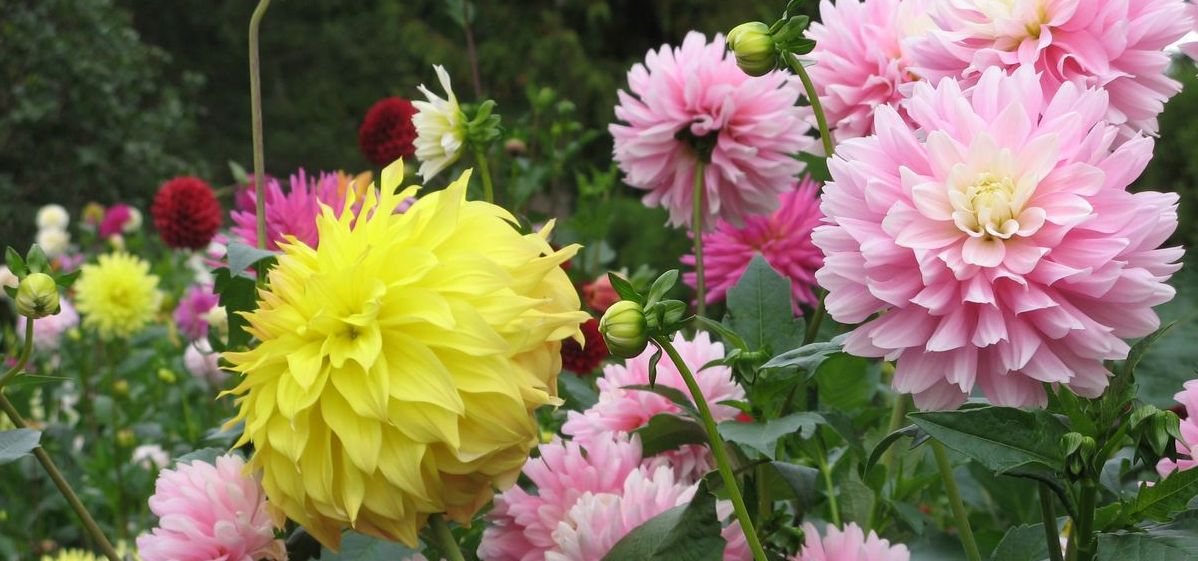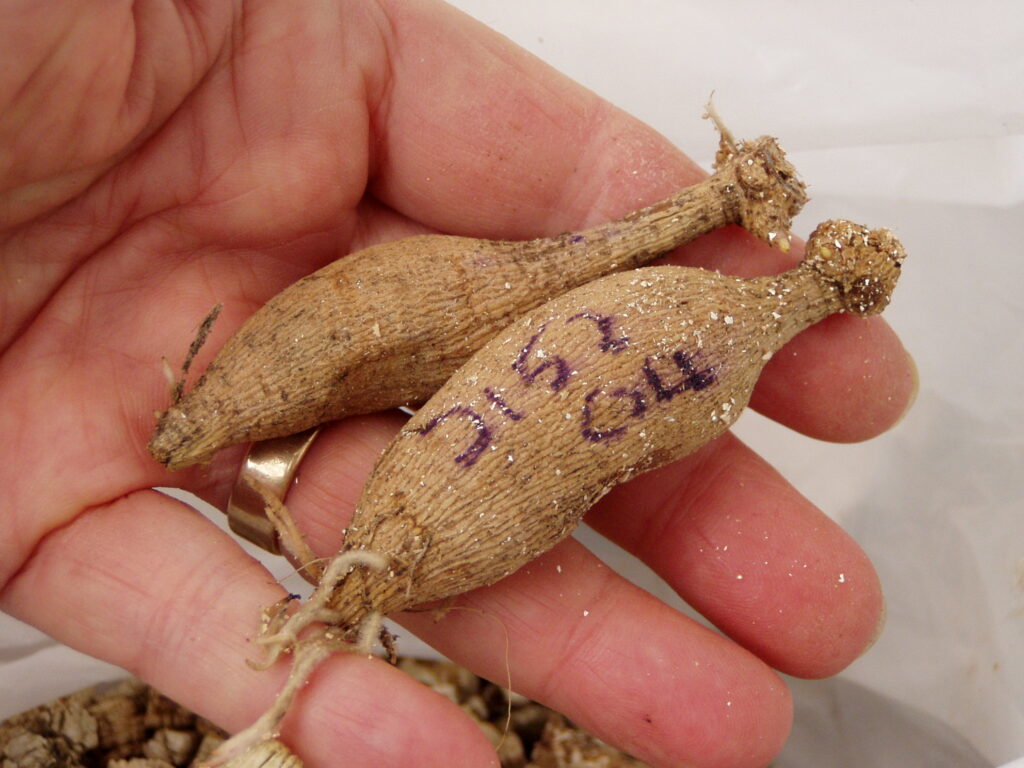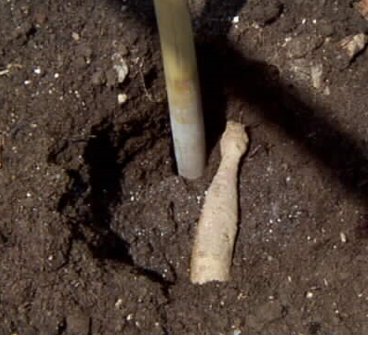
In the Spring...

Dahlia tubers are pulled from winter storage, and get “woken up” by putting them in an indoor area where the temperature is warmer. Each tuber is checked to make sure that there is no rot, and that the tuber is firm and has at least one good eye. Once purchased, your tubers need to be cared for with appropriate gardening practices. A good guideline is to plant your tubers in the same timeframe as you would plant tomatoes. If you want blooms as early as possible, you can start your tubers indoors in good light, about one month before planting time. The dahlia tubers and eyes (growth tips) are fragile and they will not grow if damaged, or subjected to excessive moisture, or dry out too fast. If frost warnings are over, plant them immediately after purchase. If unable to plant immediately, pot up each tuber into a container with drain holes and use a commercial porous soil mix. Ideally, they should be placed in a greenhouse or, alternatively, a sunny protected site. Placing tubers on indoor hot windowsills may result in drying. Plant your tubers in the garden as soon as conditions permit.
Tips for Growing

Dahlias require a site with good drainage and partial-to-full sun (at least 6 hours of sun per day). Pots are also an increasingly popular way to grow dahlias. They require regular watering during their growth and good drainage, so that they do not remain under water for any prolonged periods. Dahlias prefer a pH level from 6.4 to 6.8.
In the South Vancouver Island area, begin planting between mid-April to mid-May depending on your local location or microclimate.
Most dahlias need to be staked, and you may wish to insert a sturdy stake before you plant your dahlia tuber. If you put the stake into the ground after the plant is growing, then take care to avoid damaging the tuber or the root system. Tomato cages can also be a simple approach to staking.
Start by digging a 10” deep planting hole. Drive a 4 to 5 foot stake into it. Put a small handful of bone meal, and optionally, fertilizer (something like 6-8-6) at the bottom of the hole and cover with a light layer of soil. Place the tuber flat at the bottom of the hole with the eye or growing tip up and cover with soil to the top of the hole. The eye is the point on the shoulder or crown of the tuber from which the plant grows. You should leave a small indentation in the soil at the top of the hole for watering.
If your tubers are already growing and have green leaves showing, do not follow the above procedure. Dig your planting hole a little shallower than 10” and add your bone meal (and fertilizer) as above. Instead of burying your tuber flat, place it on a slant with the roots down and the growing tip of the dahlia with the green growth at, or a bit below, the soil surface. Planting any green leaves below the soil may result in rotting. For potted dahlia plants, follow the latter procedure as well. Good strong stakes or re-bar placed next to the tuber are recommended.
If you are planting a number of dahlias in the same location, it is recommended that they be separated by about 2 feet to give each plant room to grow. When dahlia plants are young, they are susceptible to slug damage. It is a good idea to manually remove slugs early each morning or to protect your plants with a commercial slug killer.
When the plants are growing well and about 2 feet high, tie the dahlia stalk to the stake with twine or strong string. Tying should also be provided at 3 feet and 4 feet heights to help the plants stand up during heavy rains and/or winds. Tying will also help the stems to hold up the flowers during rains or from heavy dew which occurs during Fall months in particular.
Young dahlia plants do not need a lot of water; in fact excessive water can lead to rotting of the plant. As the plants get larger, a good rule of thumb is to water them if the rainfall is less then one inch in seven days. In the heat of the summer, watering every day or two is recommended. Dahlias in pots require more regular watering.
Our gardens are increasingly susceptible to damage by deer. The good news for dahlias is that they are low on the deer’s list of favourite foods. While dahlias are not considered ”deer proof”, if deer find enough other plants that they would prefer to eat, then your dahlias will hopefully be safe.